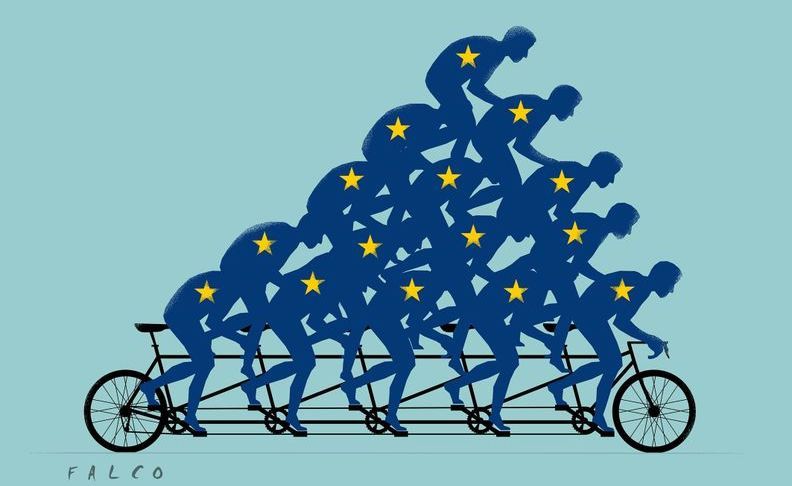Word has it in the European press these days that the European Union is in the process of creating its own diplomatic corps and setting up its own embassies. The unblocking of the Lisbon Treaty has now paved the way for one of the biggest innovations the treaty has to offer.
The idea of a common European diplomacy goes back several years: it was first broached in 2000 in a European Parliament resolution. The European Convention that drew up the “Draft Treaty establishing a Constitution for Europe” between 2002 and 2003 then took up the brainwave of endowing the Union with a diplomatic representation of its very own. The debate over that diplomatic innovation seesawed between two extremes: whether to create a single European diplomacy over and above that of the Member States or maintain the current system of sharing responsibilities between the Commission and the Council.
The two aspect of EU foreign policy
The model hammered out by the Convention – and now enshrined in the Lisbon Treaty – is a happy medium. On the one hand, it merges the Council and Commission’s external action services and takes the Member States’ diplomats aboard. On the other hand, it will be under the aegis of the High Representative of the Union for Foreign Affairs and Security Policy, who in turn will hold the full set of foreign policy reins hitherto shared by the Council and Commission.
In the 16 years since the European Union emerged as an international player, we have seen it play more and more parts, but it has yet to land a role commensurate with its size and its international political and economic clout.
European foreign policy has two core components: an economic and humanitarian one, which is run along Community lines, and a political one, which depends on intergovernmental input. The first one works pretty well, the second does not. To achieve the best possible results, a qualitative leap is a must: we need a new model, and this is where the European External Action Service (EEAS) comes in. That will help solve the problems caused by the lack of unity, coherence, visibility, consistency and efficacy.
The new treaty provides that this service is to be established by decision of the Council, acting on a proposal from the High Representative, after consulting with the European Parliament and approval by the Commission. This clunky concatenation is of great political import, since, contrary to EU politics-as-usual, the heads of state will not have the last word here. Hence the capital importance of the personage appointed to the post.
Community based or intergovernmental?
Various models for the future EU diplomacy were recently made public. On the one hand, the European Parliament on October 22 passed a so-called “maximalist”-type resolution, based on the Brok Report, aimed at applying the “Community philosophy” to common foreign and security policy. It proposes a gradually evolving foreign service which is to be integrated – albeit with administrative and budgetary autonomy – into the Commission’s administrative structure, and which will incorporate all the old Commission delegations to form the future EU embassies.
The second plan comes out of a report drawn up by the Swedish presidency. Of an intergovernmental cast, it keeps Community and intergovernmental affairs separate, preserves the existing Commission delegations, and establishes the EEAS, whose mandate is confined to dealing with the Common Foreign and Security Policy (CFSP), European Security and Defence Policy(ESDP) and general aspects of foreign affairs, while leaving the Commission in charge of trade, development, expansion and the European Neighbourhood.
A flagship project
A middle-ground consensus is going to be found somewhere between these two models. Parliament still has to be heard on the matter, and seeing as it has to approve any candidate for High Representative nominated by the Commission and the Council, the EMPs are bound to demand that the candidate commit to safeguarding Parliament’s interests. What will follow is a gradual process of integrating various powers, units and personnel into the new service.
Ultimately, time will tell what comes of the upshot: whether intergovernmental or Community considerations prevail, whether it achieves the goal of bolstering Europe’s presence in the international arena, and whether this will prove one of the milestones in the making of Europe on a par with the forging of the internal market or the adoption of a single currency.
Was this article useful? If so we are delighted!
It is freely available because we believe that the right to free and independent information is essential for democracy. But this right is not guaranteed forever, and independence comes at a cost. We need your support in order to continue publishing independent, multilingual news for all Europeans.
Discover our subscription offers and their exclusive benefits and become a member of our community now!












